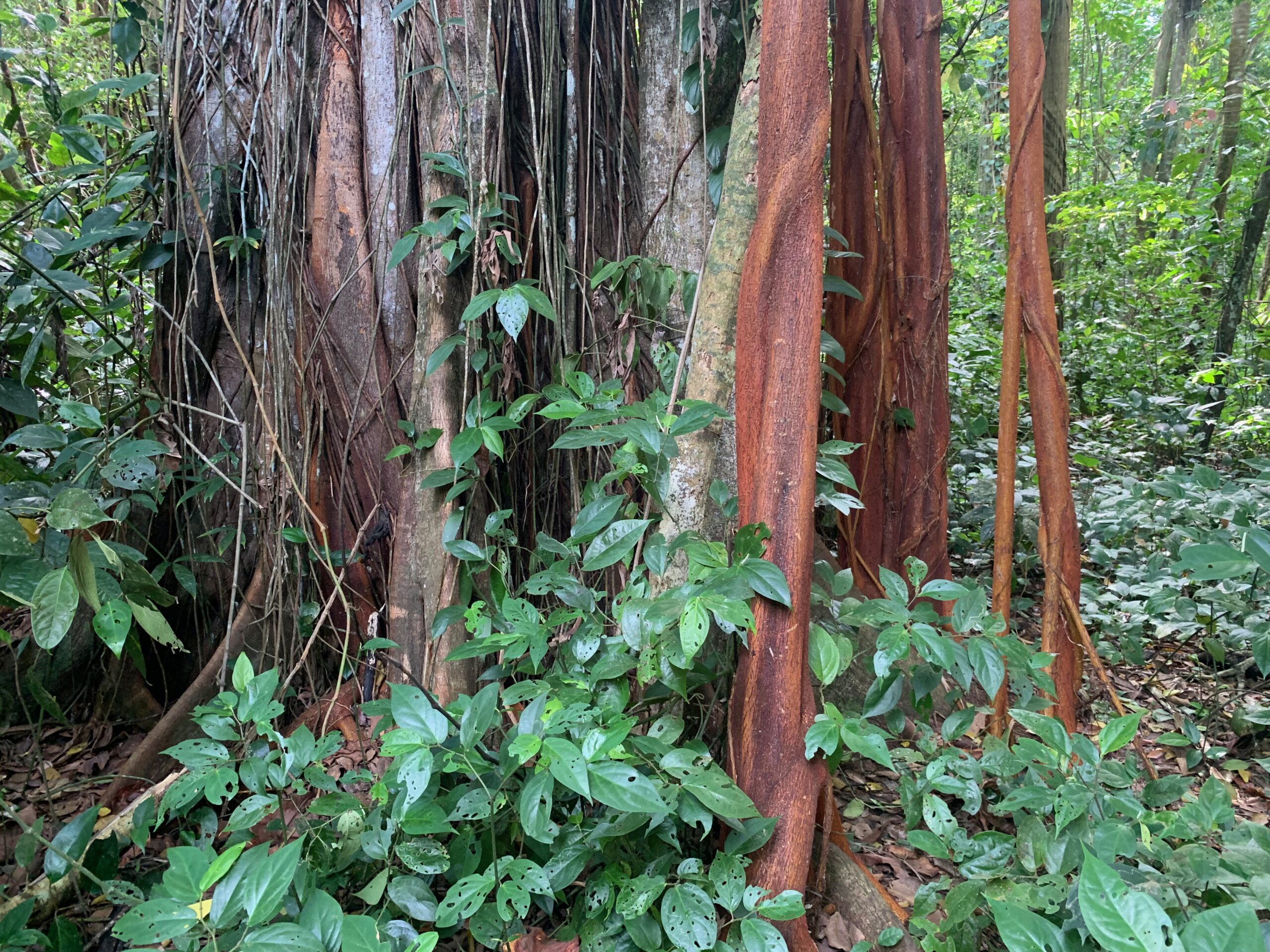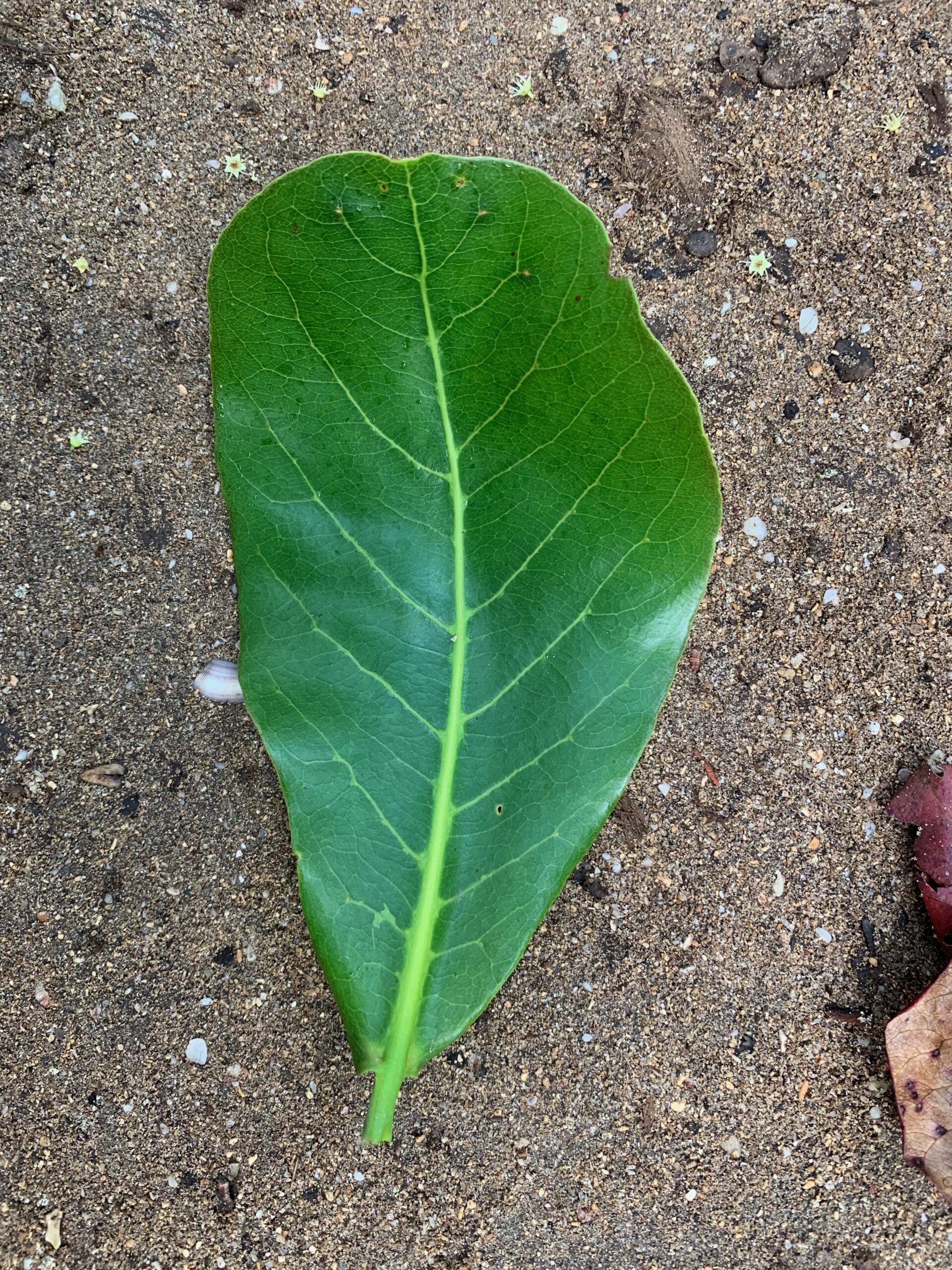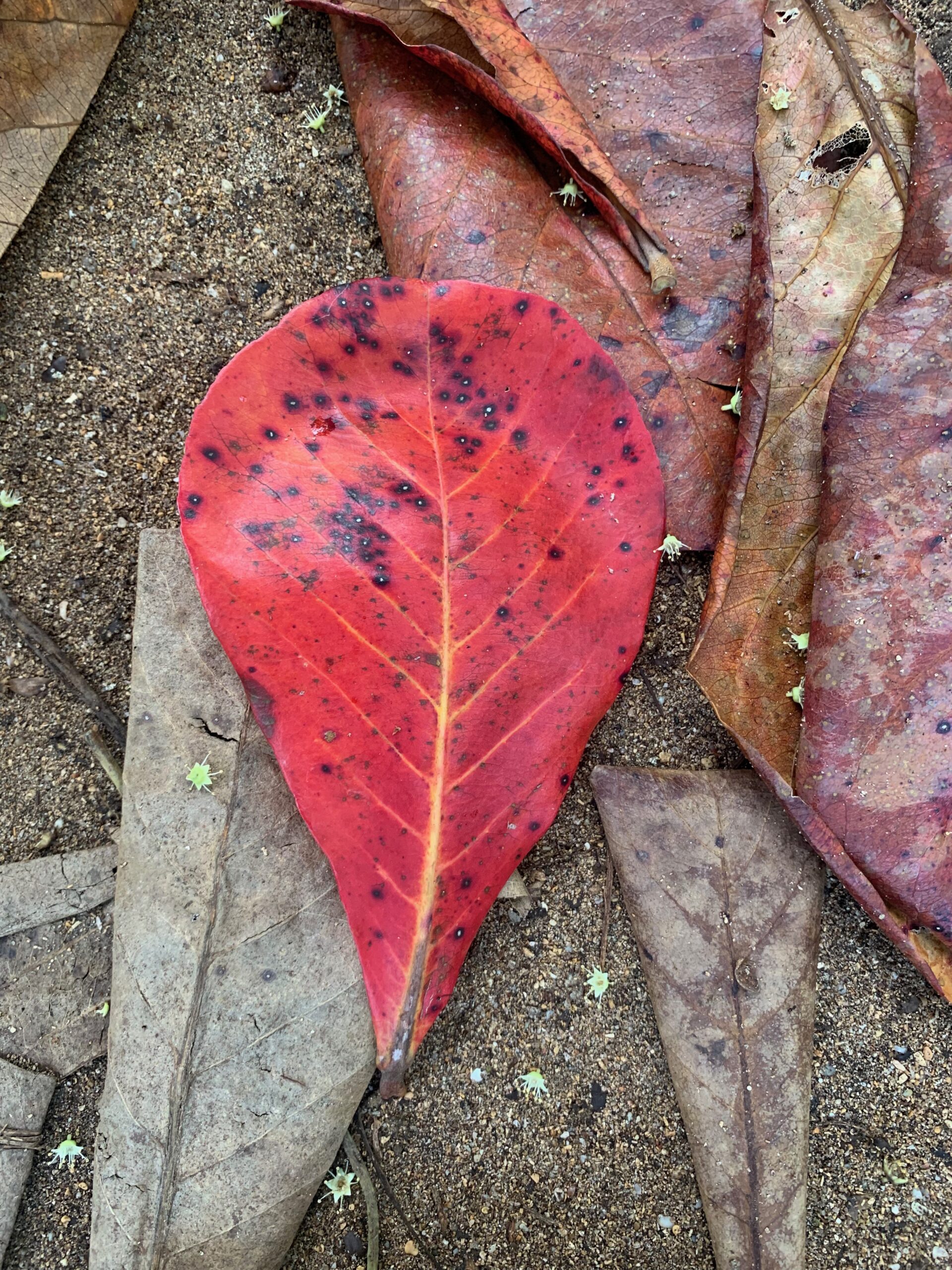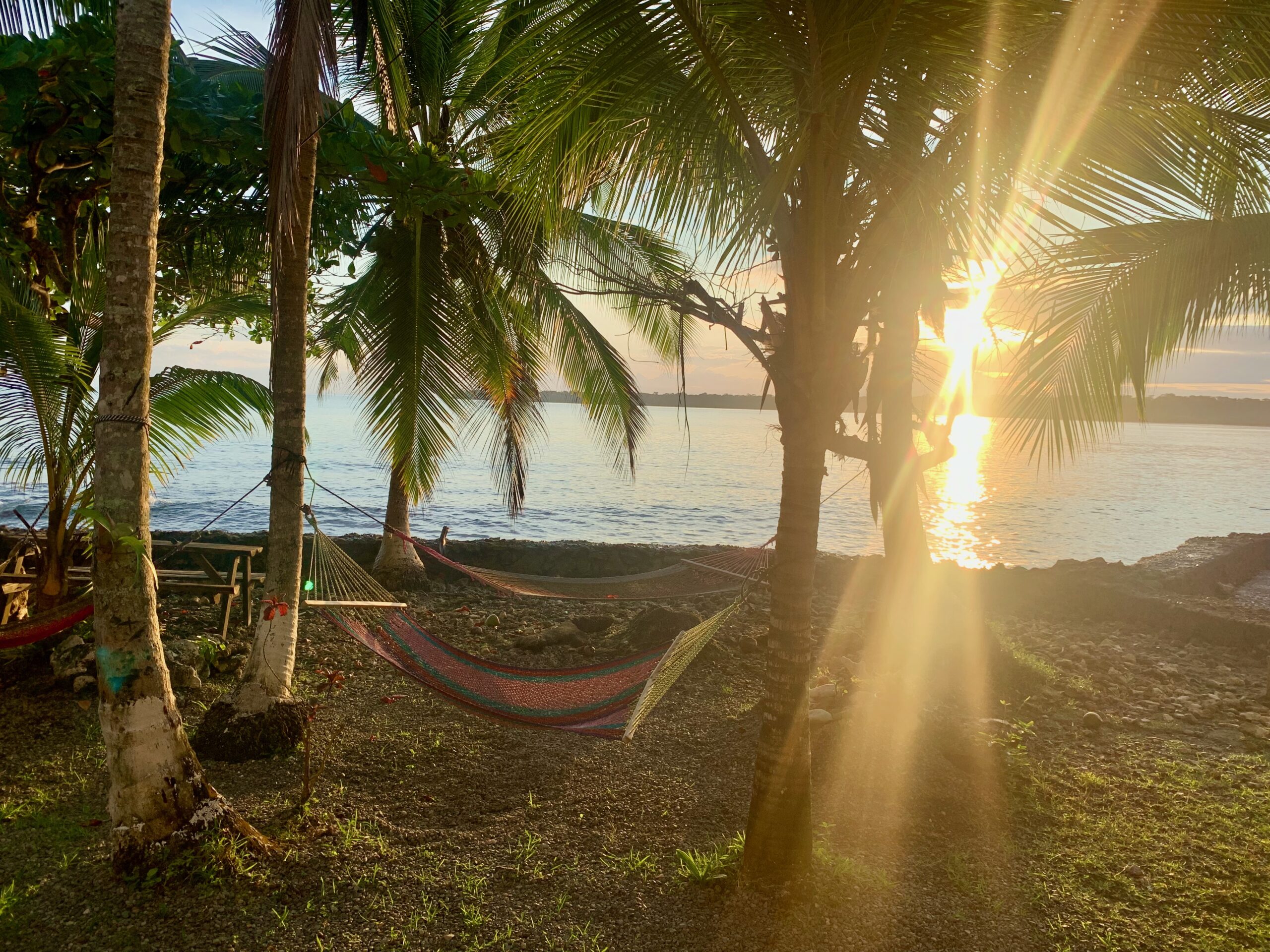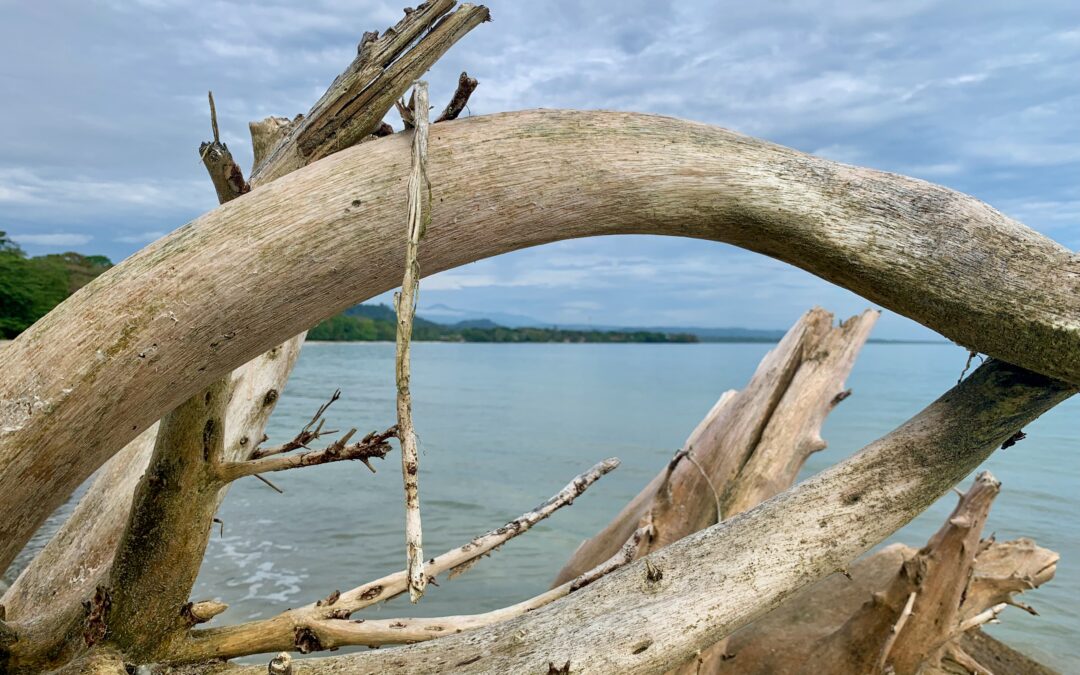March 13th 2023, Chuita, Costa Rica.
When I first heard the noise coming from the woods behind the beach, I thought it was a recording — some sort of piped animal grunting through loudspeakers laid on by the authorities. Part of what one friend termed Costa Rica’s tendency to the Disneyesque in terms of its eco-tourism offering. The woods — tropical rainforest actually — hug the back of the beach and, like it, curl around the turquoise bay in a semi-circle of Caribbean picture post-card beauty, with palm trees draped over the sand as if trying to dip into the water. The beach carries on out along the shoreline to Punta Chuita, the outer reach of a small, north coast peninsula that is now one of Costa Rica’s many national parks. Relative to national parks that take in whole mountain ranges, it’s a small one for sure, just 1,102 hectares, (Phoenix Park in Dublin is 707 hectares for comparison) but there’s lots in it, as I found out.
The small town at one end of the beach is Chuita, whose population can’t be more than a couple of thousand but it is a mecca for backpackers. There’s the usual collection of colourful hostels and equally colourful bars and restaurants whose wide open fronts blur any distinction between inside and outside. Where the town meets the beach, a narrow footbridge crosses a stream, leading to the entrance to the rain forest park. Its free in but a donation is suggested, which is fair enough.
By 7am, there’s a small clutch of tourists, mostly middle-aged retirees but a few also in their 20s and 30s, waiting for it to open. Though why wait? — you can just walk onto the beach and then into the forest, if you wish.
Once inside, the place from where the noise came the night before is now quiet. The sun is barely up and there’s little to no wind but still there’s a slight rustle of leaves from the breeze that does blow through the very tall trees. A boardwalk path from the entrance soon gives way to a much more pleasant sandy path which runs parallel to the beach but stays within the forest. Every now and then, there’s a bit of movement, something scampering along the ground which is covered with dead leaves and other natural debris of the forest. But I never see what it is. Maybe a squirrel, because further along, I did see one, which had very dark brown fur but looked otherwise like the American grey squirrels we see increasingly at home.
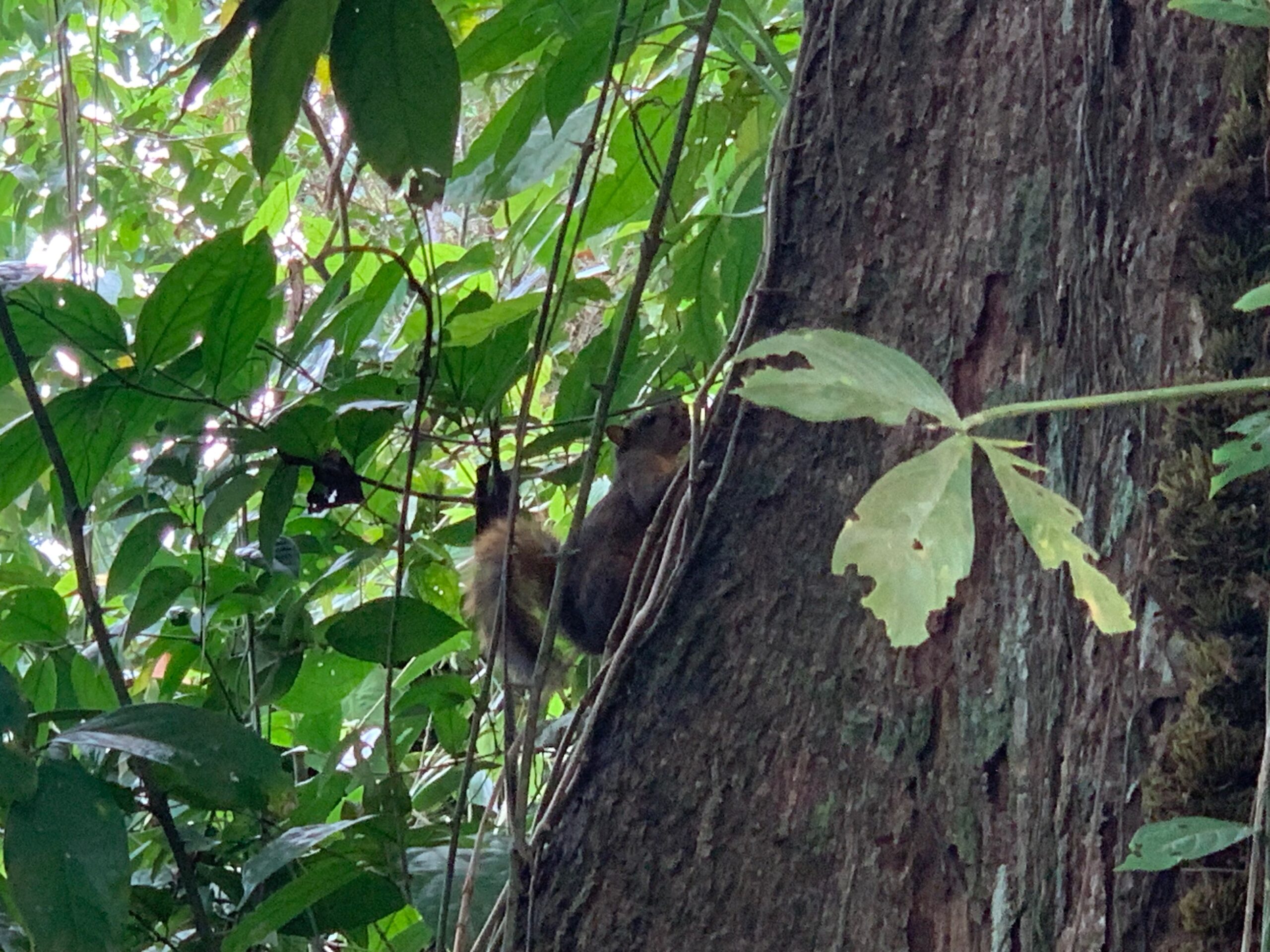
There were lots of birds but they were mostly too deep in the forest for me to see them, though I could hear their calls well enough. The most common ones in and around the town are the Great Tailed Grackle, a black bird with very long tails, about the size of a magpie. They make a lot of clatter (like magpies) but also whistle, and Black Vultures, ugly things (who’s ever seen a pretty vulture?) that are about the size of a large chicken. Ungainly on the ground, they grace the sky, sweeping with elan through great arcs, looking down for something dead to eat. Oddly enough given their presence further south as well as in Florida, I saw no Pelicans in northern Costa Rica, nor Frigate Birds, masters of the Galapagos.
Gradually in the woods, the sound from the night before re-establishes itself. Up ahead of me, the deep growling, quite a horrible sound actually, like something that might be heard in a horror film, heralding the arrival of a great evil, echoes through the dense forest and soon dominates. You can see nothing of course but soon, it’s there all around you.
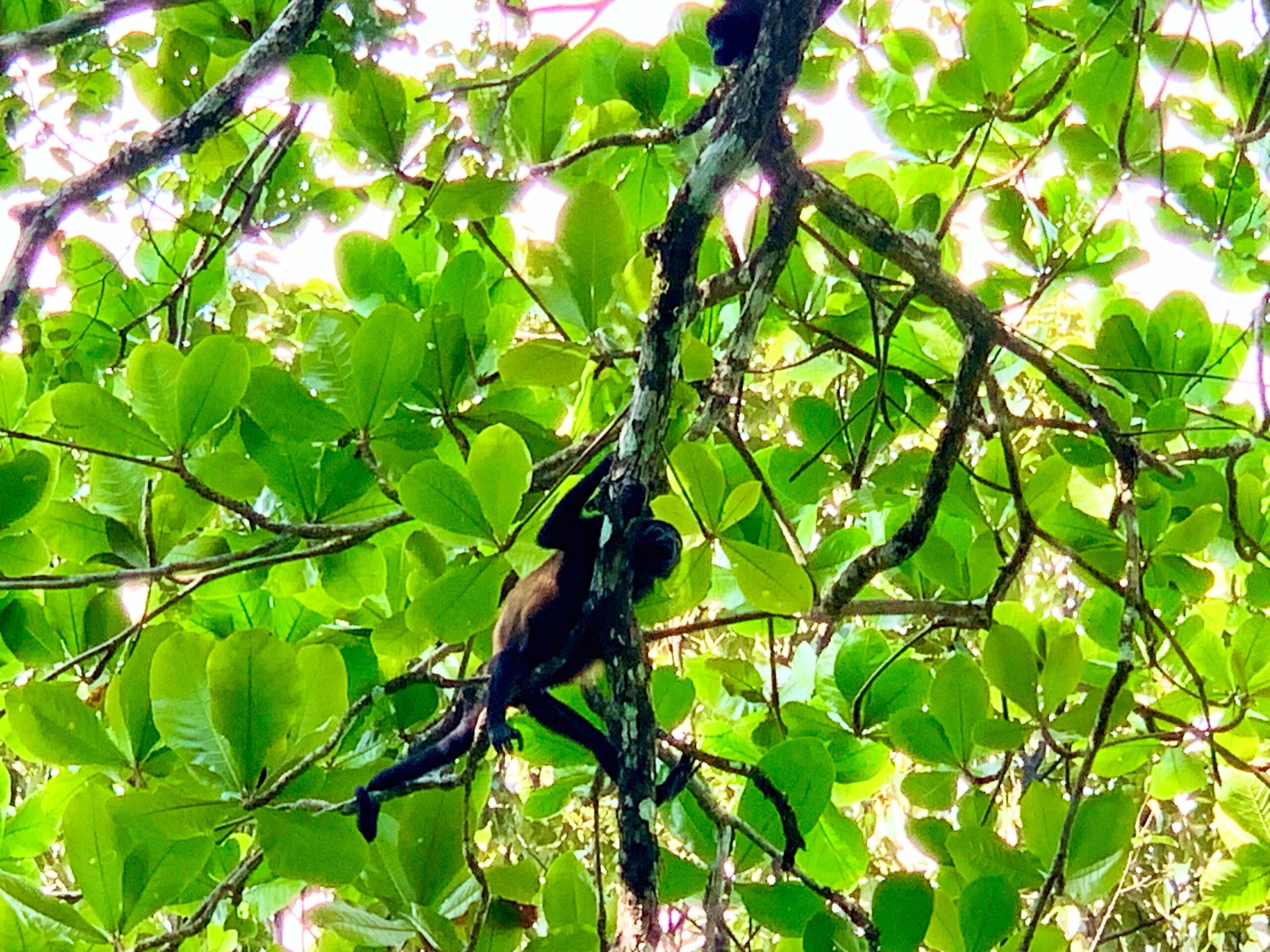
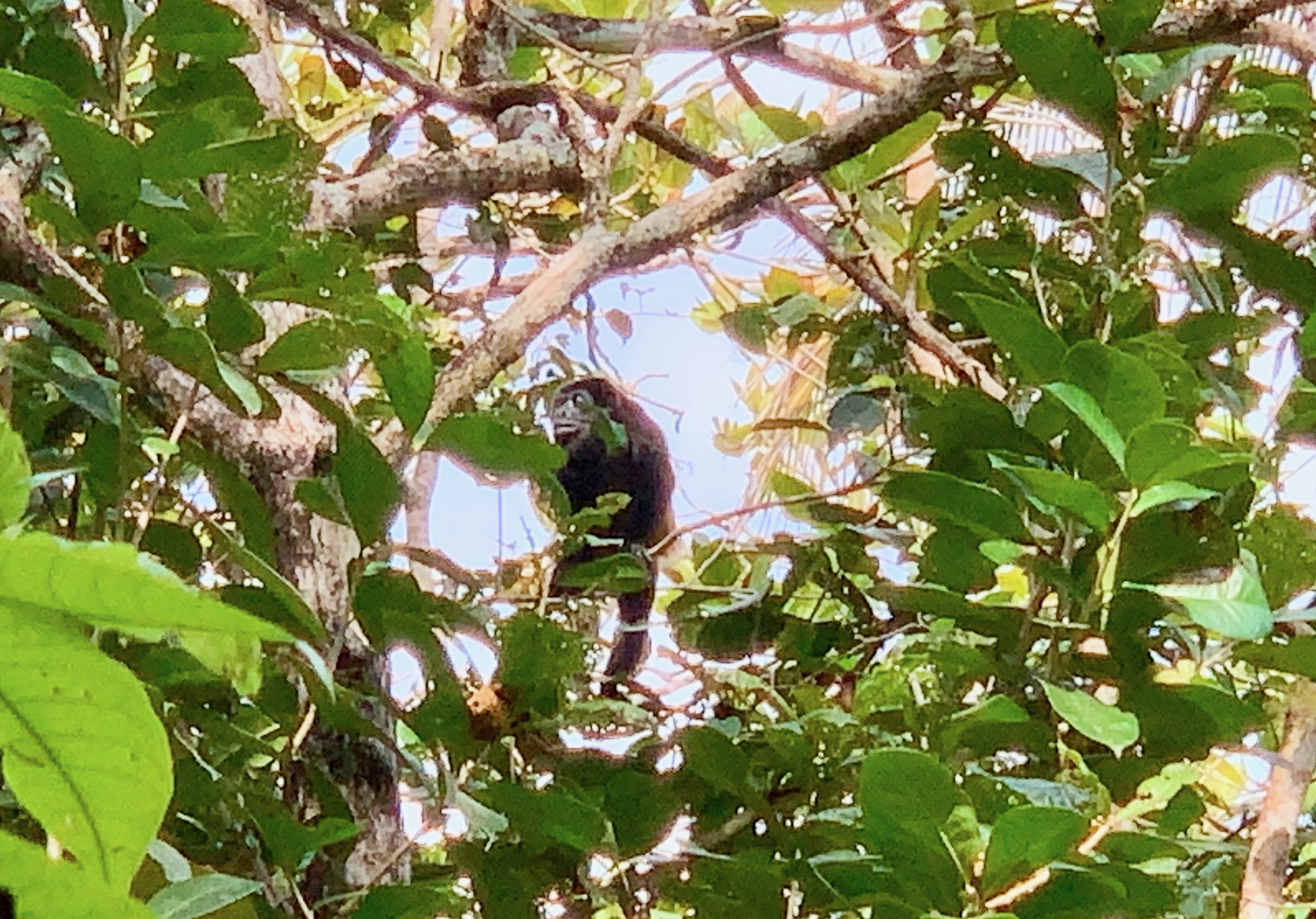
By the time I get to the epicenter, the boardwalk is back and, on either side of it high up in the trees, maybe 15 or 20 meters up, there are two sets of monkeys, appearing to have a go at each other, verbally. I learn later that they are called Howler Monkeys (Alouatta palliata), for very obvious reasons. There are maybe half a dozen on either side of the boardwalk, adults and children, and they seem to be in two distinct groupings because the calling — for what I don’t know but I assume it is to do with territory, food or sex, as most howling does — starts with one group and then the other seems to respond. They mostly just sit there on branches but occasionally run along one and leap to another but in general, there’s not a huge amount of movement.
And, looking up trying to take pictures (and mostly failing) or capture some of the movement on video, I clutch hold of the boardwalk rail for balance. . . and find my palm deep in monkey shit. They just do it when, and wherever, they fancy. Entirely sensible of course, from their point of view.
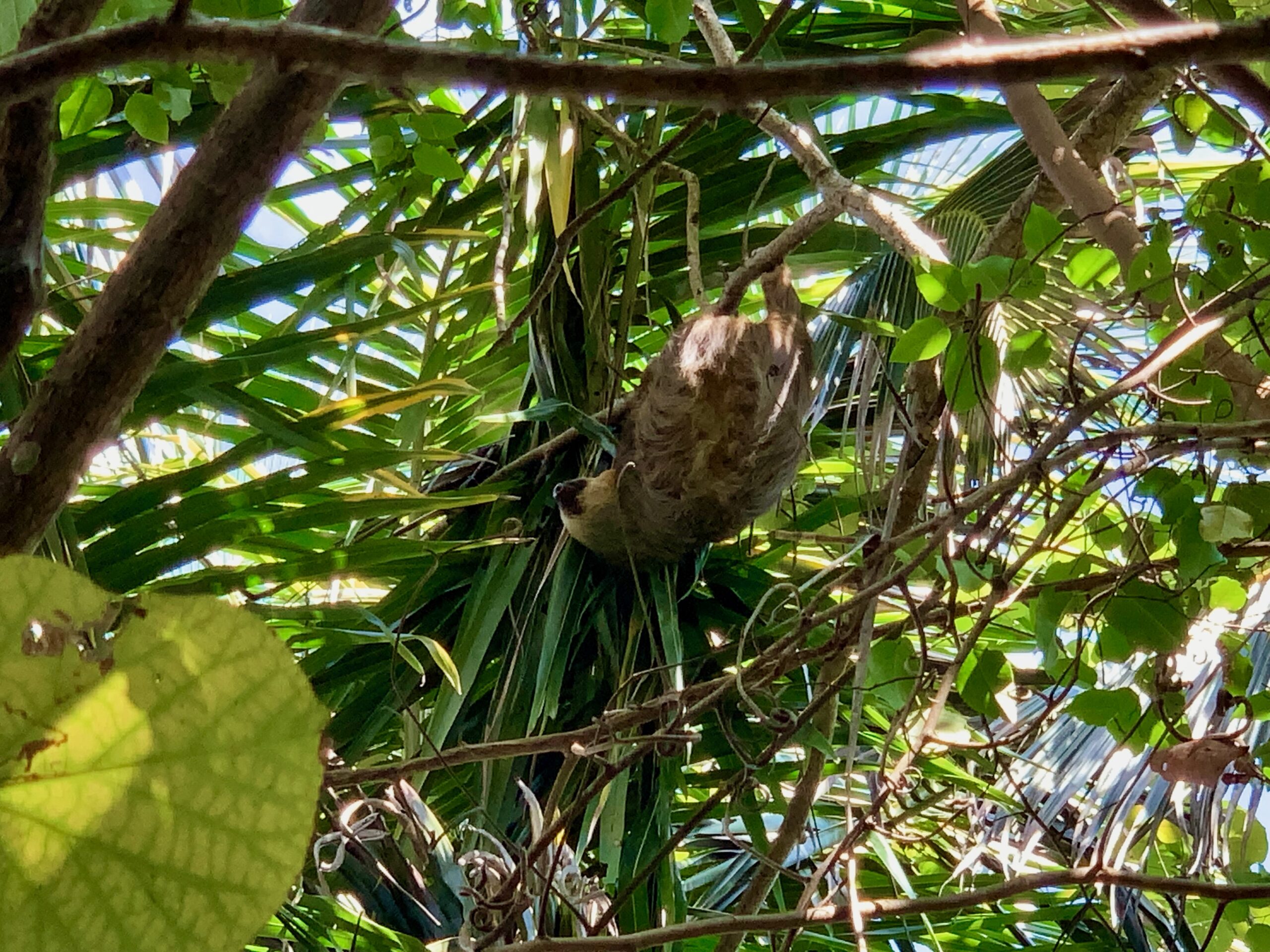
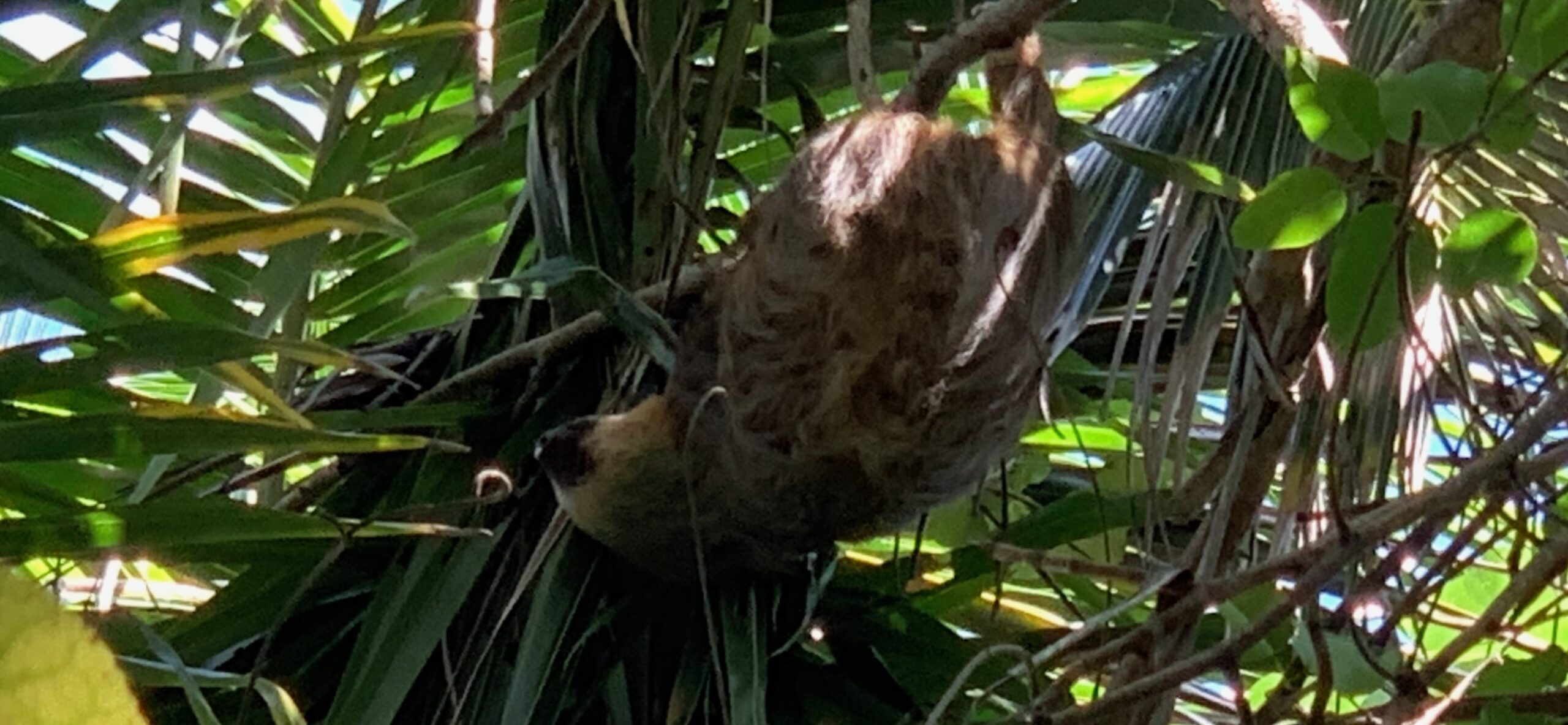
A little further on, a German couple and looking up at something else. A Sloth, the woman says to me without taking her eyes away from the object. Sure enough, there it is, hanging upside down on a tree branch underneath the canopy of a palm, a Sloth — light tan with a slight brindle and a youngster clutching on to its tummy. Well, the woman said she could see that but I wasn’t so lucky. The animal moved, when it did move, which was not a lot, with such deliberation that it was like a slow motion manoeuvre. There’s a Sloth sanctuary nearby and the animal is something of a mascot for the whole country.
The trail continued to mirror the beach and, every now and again, I’d step out of the forest and onto the sand to experience the stunning views — of the beach itself, but also the sea and the vista across the water back to Chuita and beyond it, the mountains of central Costa Rica. The sand was a lovely powdery white with lots of crushed coral in it. Out to sea, at the head of the peninsula, is a long, narrow coral reef where life is under attack from Lion Fish, an invader from the Pacific that is apparently causing havoc and, say locals, having established itself in the Caribbean, it is now expanding and colonising. By eating just about everything in its path (it can consume 80 per cent of other fish in any given area with five weeks) and with no known predators, the Lion is upsetting the balance of nature around the Caribbean coral reefs, leading to the death of the reefs themselves. Signs outside restaurants in Chuita urge customers to eat a Lion Fish.
One of the things I have noticed, here and on all beaches since Ecuador, is the amount of drift wood debris there is. I guess it’s there because in abundance because, whereas in Ireland lots of people collect drift wood for drying and use as firewood, they don’t do seeing as you don’t light fires to heat your home. The backpackers and post-hippy wanderers light beach fires sometimes. The gap year students are grand — friendly, chatty, energised for the most part. But the permanent, rootless and usually middle aged, travellers are another matter. One, a woman from Canada with her head shaved and a six inch bird feather sticking out of her ear lobe, chatted to me for a while before thanking me for bringing “my Irish love to Costa Rica” . . .
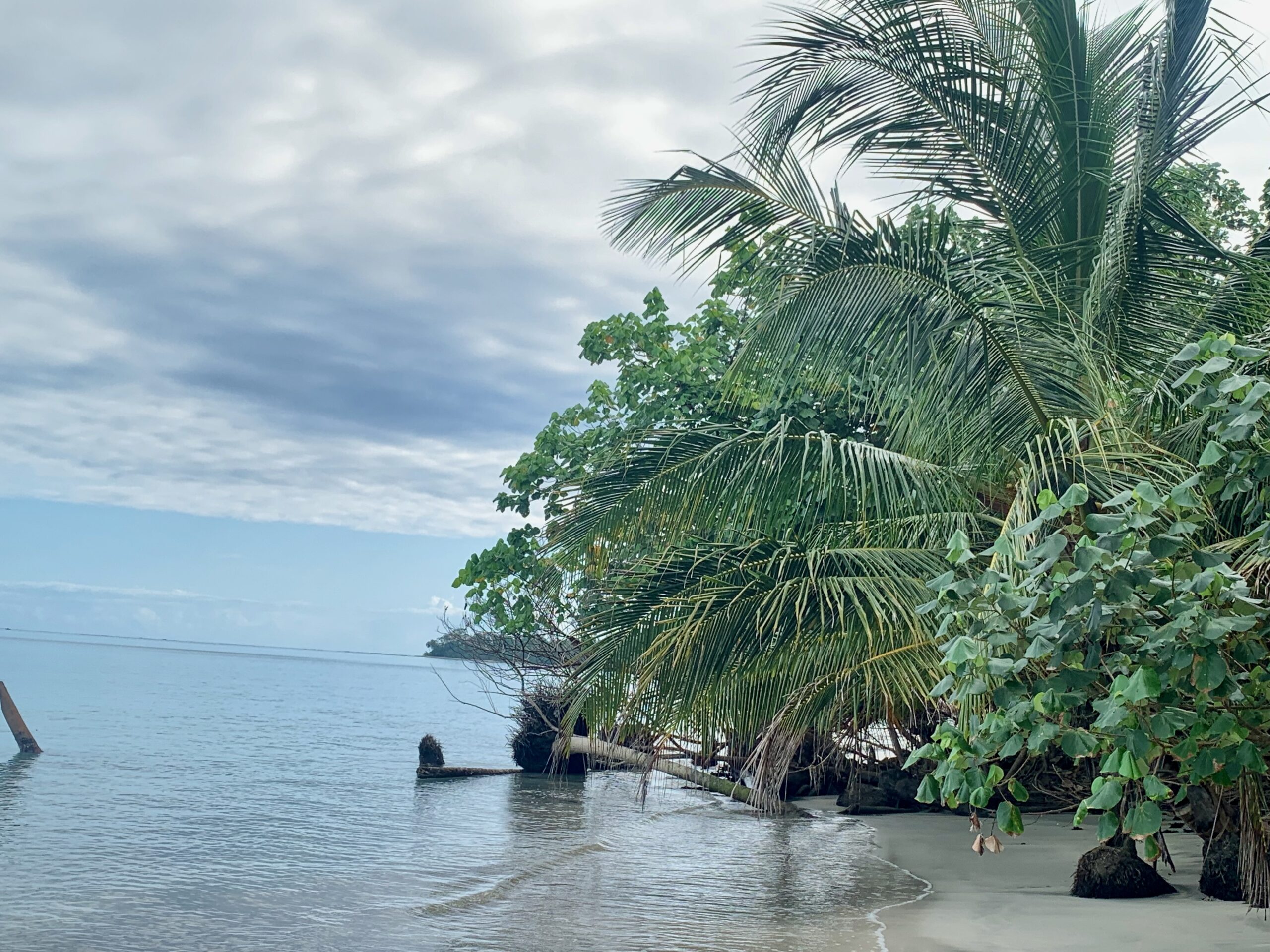
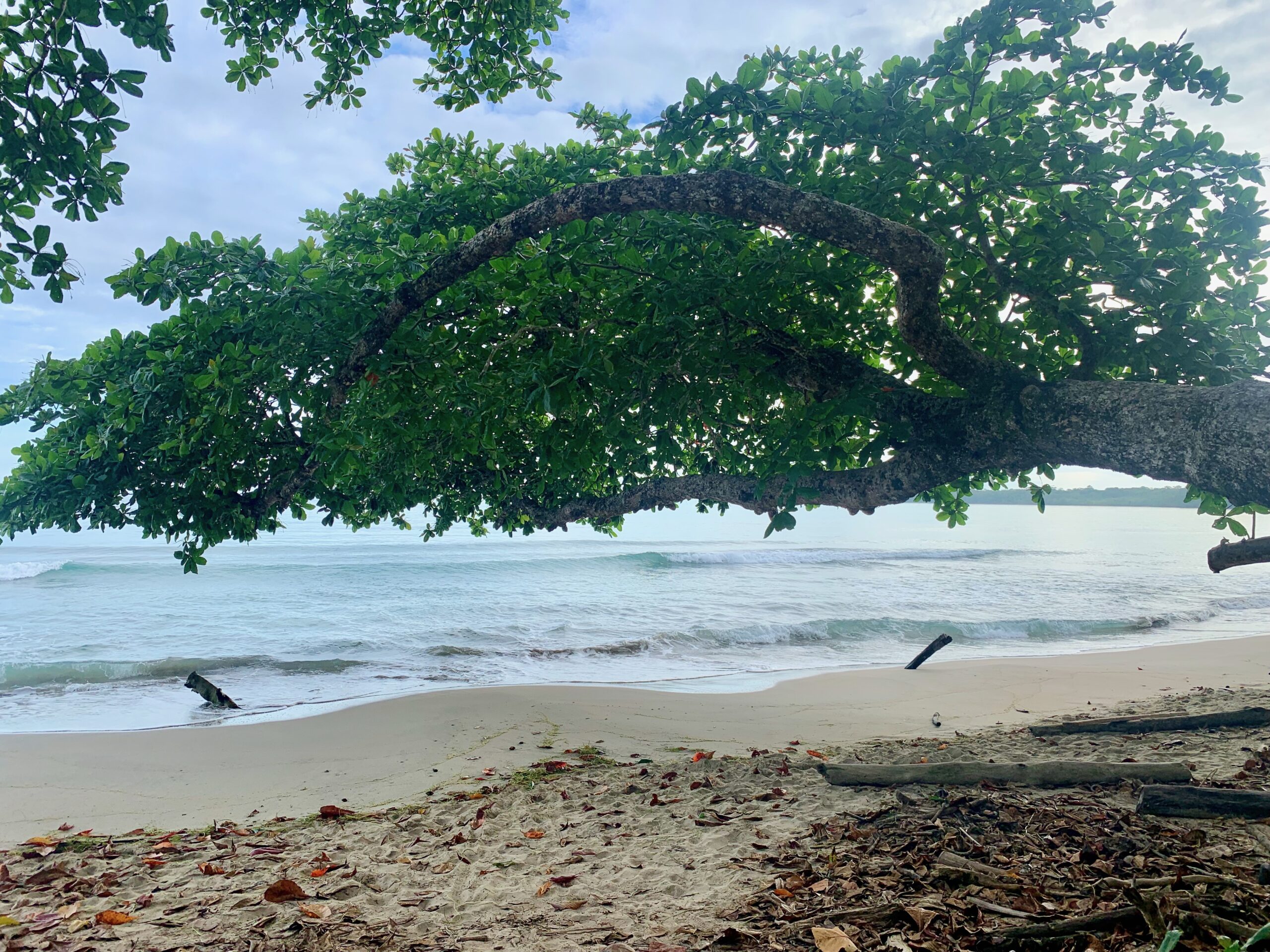
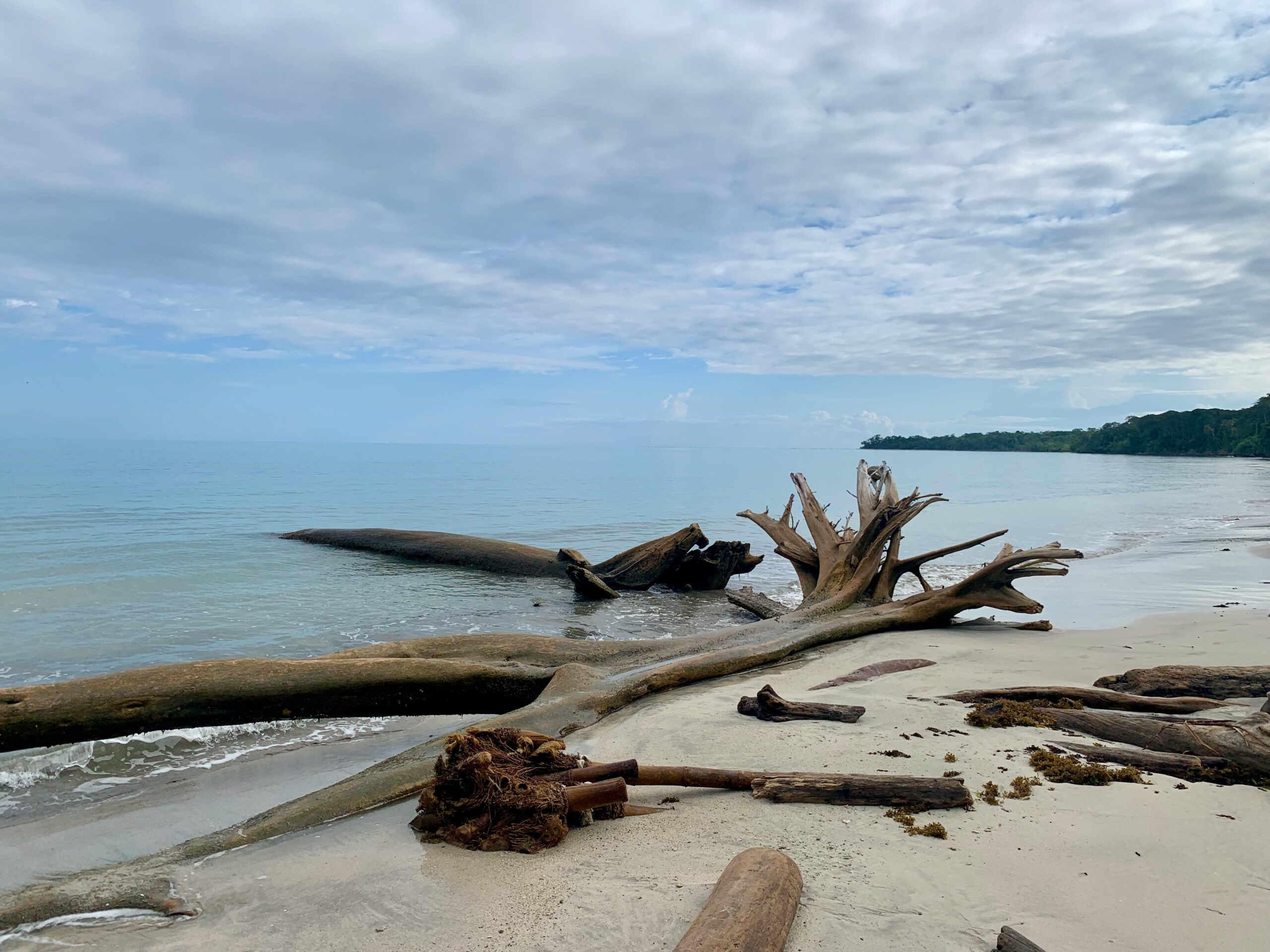
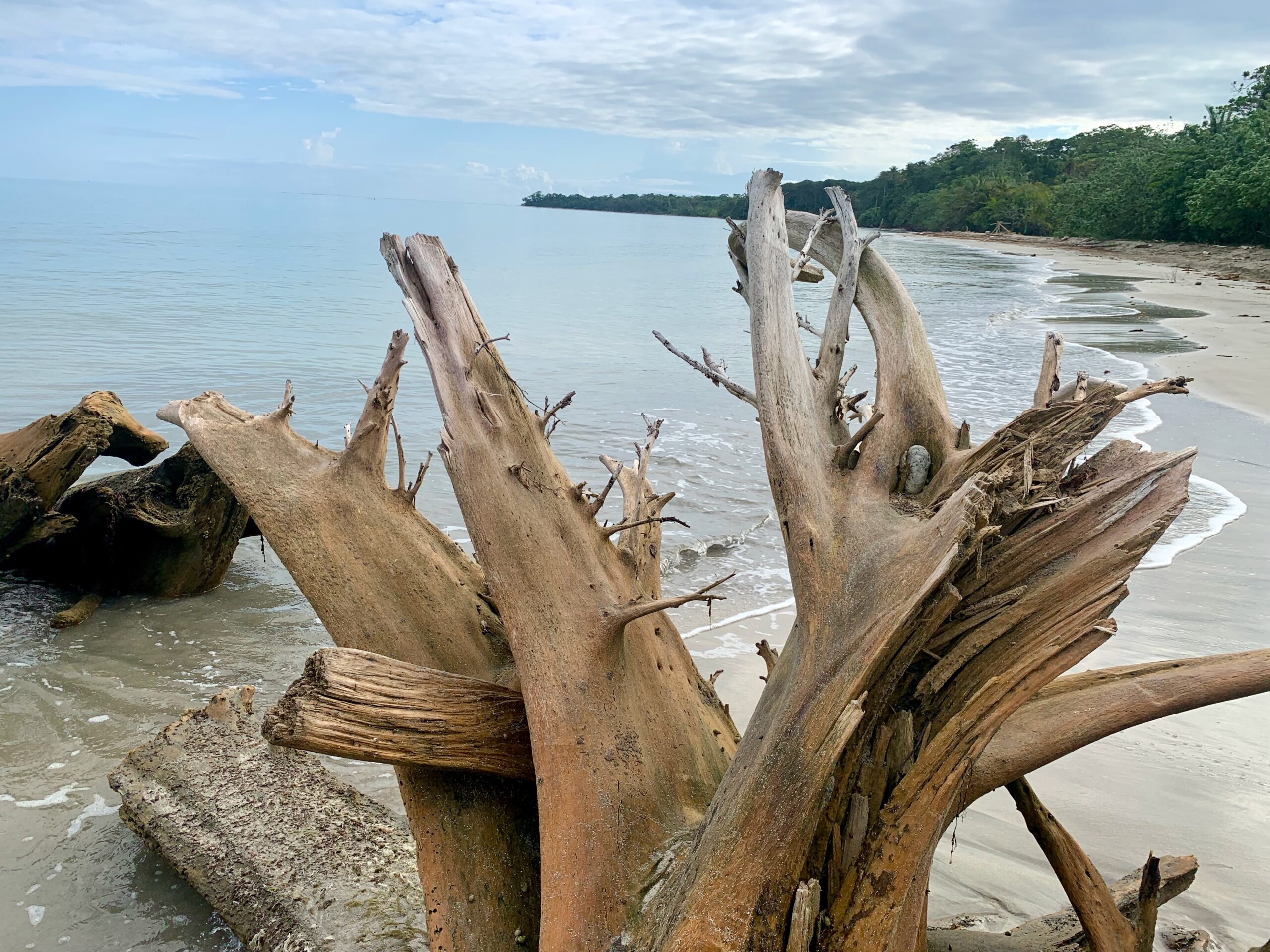
Further along the forest trail again, I came across Petra from Berlin, who was sitting on the sand, under the bow of what I think was a sea grape tree (Coccoloba uvifera). And on the bow stretched out over the water was a small White-face Monkey (Cebus capucinus) picking fruit and munching away. It was soon joined by others and they all seemed fairly relaxed about the pair of us watching them, though if you moved suddenly, they scampered up the trees, the branches whipping back into shape as they leap from one to another.
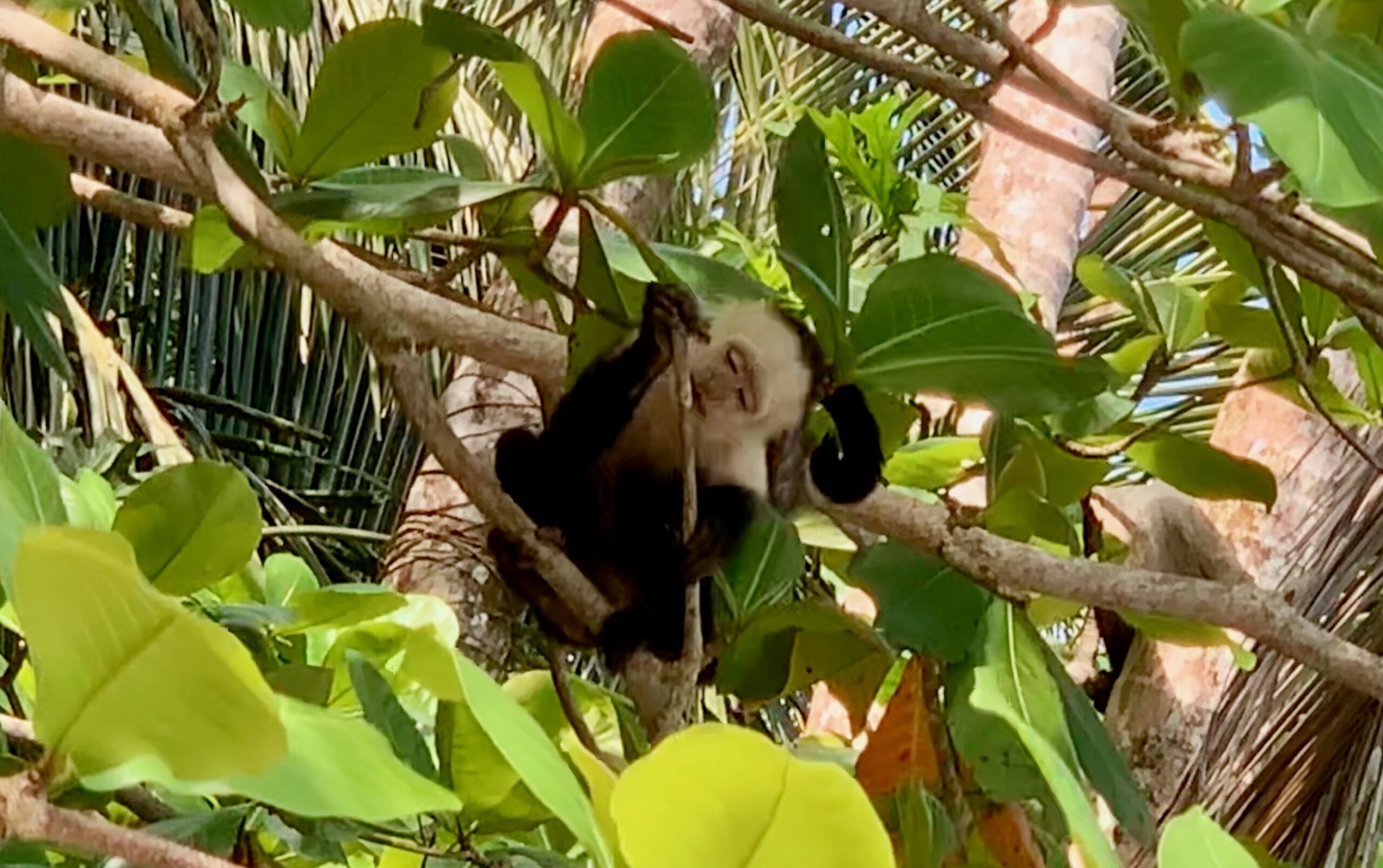
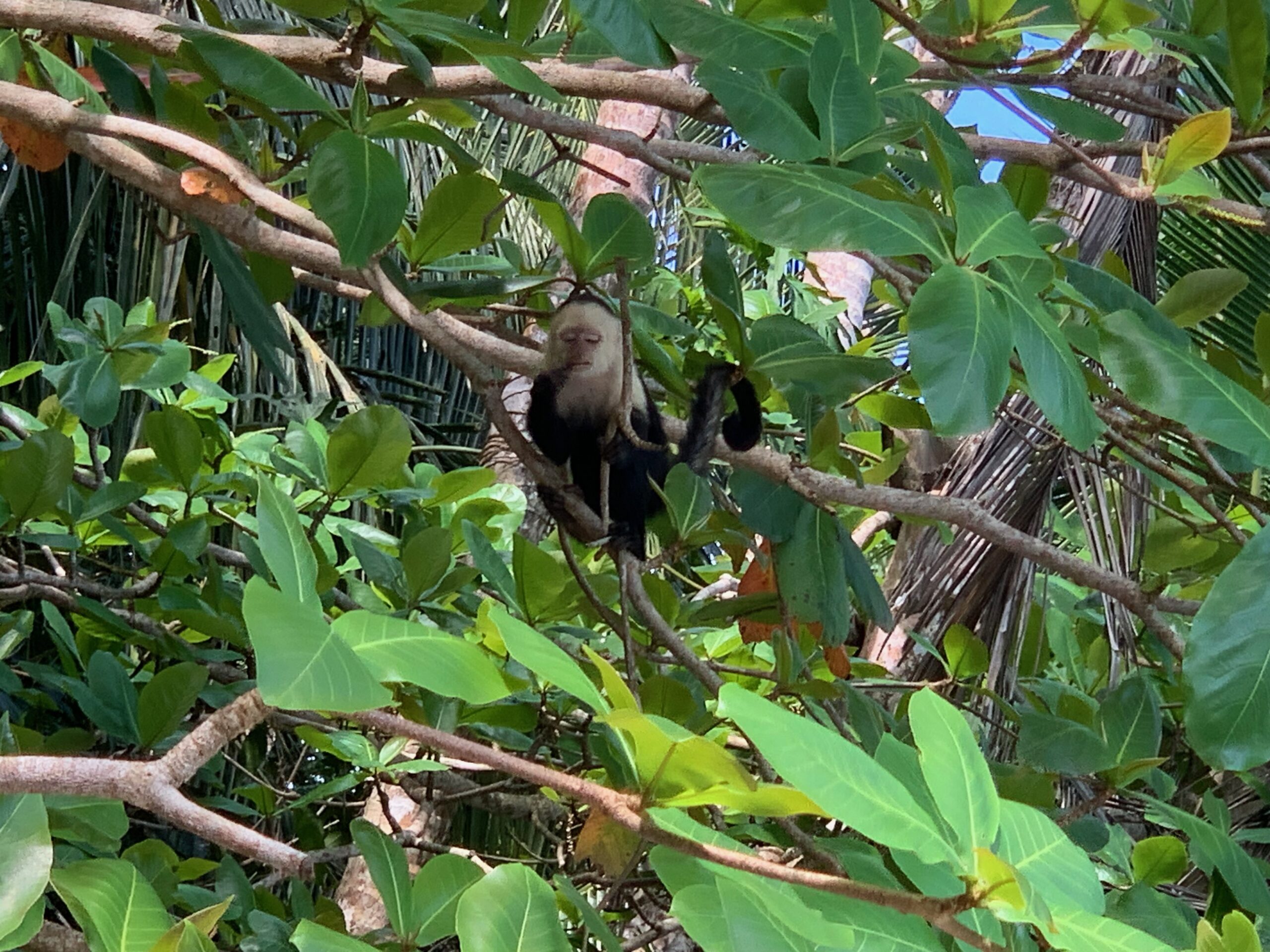
People walking the trail become very respectful of where they are. They whisper, as though not wanting to disturb the residents, and no one, but no one, leaves any litter. Signs tell you not to feed the monkeys, or anything else . . . especially with yourself: don’t swim in the creeks, say signs, as there are crocodiles about. I didn’t see any and I didn’t swim either.
Just before I emerged from the forest, a large butterfly floated past me. It was one of those rainforest blue butterflies seen on tourist posters — a Blue Morpho I think it is called — not rare but extremely eye-catching against all the dark green.
On a small section of beach, Deborah and John from Vancouver were using a dead tree as a photo prop. We chatted for a bit and they invited me to come see them when I’m passing later in the year. I might well just do that . .
